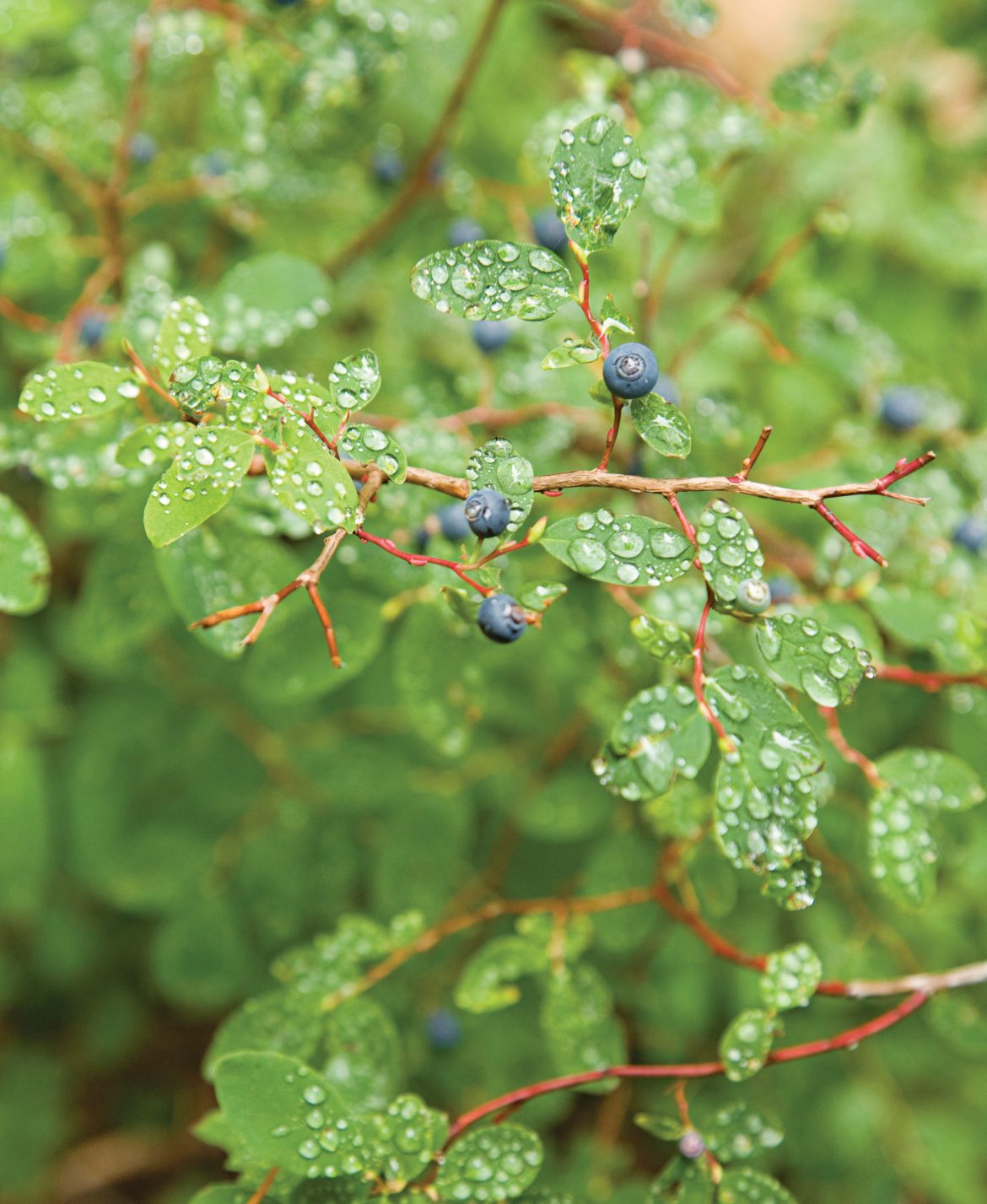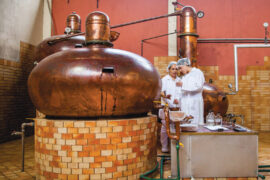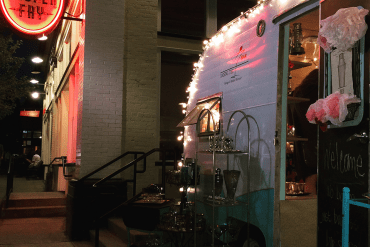Elusive and delicate, ‘God’s candy’ inspires Washington chefs’ creations
Written by Corinne Whiting
Photography by Justin Bailie
Huckleberries carry mystique in this state, said Matt Carroll, a natural resource sociologist at Washington State University’s School of the Environment. He has extensively examined huckleberry picking communities in northeast Washington. During a study in and around the Colville Forest, it was not uncommon for Carroll to see pickups on the side of the road, ready to fill up on gallons of these small, coveted berries, the fruit of a flowering plant (part of the Ericaceae family). “They’re seen as a special thing to a lot of different people,” he said.
Carroll and his fellow researchers conducted ninety-eight interviews spanning two seasons. They created four categories for huckleberry pickers: full-time commercial, Native harvesters, recreational or household gatherers, and income supplementers. “People do not like being labeled,” Carroll said, explaining that the lines often get blurred.
Yet no matter how the pickers are identified, it is clear that huckleberries are an intricate part of this region’s social and cultural fabric. Carroll learned that determining the best huckleberry locations quickly becomes competitive. It’s based on trial, error and word of mouth. When someone new enters a community, neighbors may not reveal their secret spots for years. “Locals guard huckleberry spots like their favorite fishing hole,” he said.
On one end of the spectrum, recreational pickers gather berries for family and friends, while income harvesters sell them for extra money in a county that’s historically experienced a lot of poverty. Then there is the complex and often cutthroat world of full-timers—those who work with companies that buy the berries in bulk.
Native harvesters, on the other hand, find a spiritual and cultural connection to the fruit, often saving them for special occasions. “There’s a ceremonial element to [huckleberries] for Native people,” Carroll said, adding that this tradition probably dates back thousands of years. Picking methods differ, too. Native harvesters typically forage on reservations and don’t use any mechanical means to gather their goods.
Island Berries
Mark Laska, owner of Ciao in Whidbey Island’s Coupeville, calls huckleberries “God’s candy.” During a short window each year, these berries can be found on the island—for sale from farms’ community supported agriculture subscriptions, known as CSAs, and farmers’ markets. “Some growers bring theirs from off-island, and their season seems, in mid-to-late summer, to go on for what seems like forever,” said Laska. He jokes about hoarding as many as he can.
Wherever you get yours, the chef advises “rinsing those bad boys off in a colander and placing them on a parchment paper-topped baking sheet [to] freeze them. Once frozen, lovingly Zip-lock them into a freezer bag and store them all winter long.” (His confession: “In my case, they never make it to Halloween.”)
Laska recommends adding them to pies, muffins, pancakes, even mottled amaro spritzers.
Yet his favorite combination? Huckleberries, grilled zucchini, goat cheese, and speck ravioli, topped with a brandy cream sauce with sage leaf.
Metropolitan Dishes
At Charlotte Restaurant & Lounge inside downtown Seattle’s sleek new Lotte Hotel, executive chef Alexander La Motte said that for huckleberries, his restaurant looks to locally based Foraged & Found, which supplies wild mushrooms, greens, berries and teas to chefs across the country.
Determining the best huckleberry locations quickly becomes competitive. It’s based on trial, error and word-of-mouth. When someone new enters a community, neighbors may not reveal their secret spots for years. “Locals guard huckleberry spots like their favorite fishing hole.”
La Motte is new to the area, so he has yet to pick huckleberries on his own, but he plans to get out with some vendors soon. “Whenever foraging for any fruits, mushrooms, or vegetables,” he advised, “obviously do your research or go with someone experienced to be sure you don’t pick something that is bad for you.”
“Huckleberries, along with most all wild berries, are quite delicate,” La Motte commented. “It takes a patient hand and a nice wide surface to pick the fruit. If you stack them on top of each other, they get crushed, so a wide basket or bin is best. Wild berries are even more delicate, due to the amount of sugar in them.”
Cooking with huckleberries is different from blueberries. “[Huckleberries] are quite tart and have a strong flavor,” La Motte said. “Since they are usually ripe, they also release a good amount of liquid, just to keep in mind when baking so the recipe doesn’t get thrown off.”
Chef La Motte’s favorite huckleberry concoctions are varied. “Any pastry application is great,” he said, “Muffins, quick breads, like a banana walnut huckleberry-bread, awesome—or a family favorite in my house is a clafoutis. It’s a sweet tart baked in a cast iron pan. I began my career in French kitchens, so there is a part of me that just needs a simple dish like this from time to time.”
At Charlotte, huckleberries are often pickled or added to savory creations such as an entrée with chicken,in which the berries are combined with vadouvan curry to make a gastrique. “I use a local honey, reduce it and slightly caramelize,” La Motte explained, “then add a nice vinegar such as Banyuls and reduce again to the consistency of honey. Towards the very end, we fold in fresh huckleberries so they just burst and the juice slightly reduces. The berries will hold in this liquid for weeks and can be used in many applications.”







